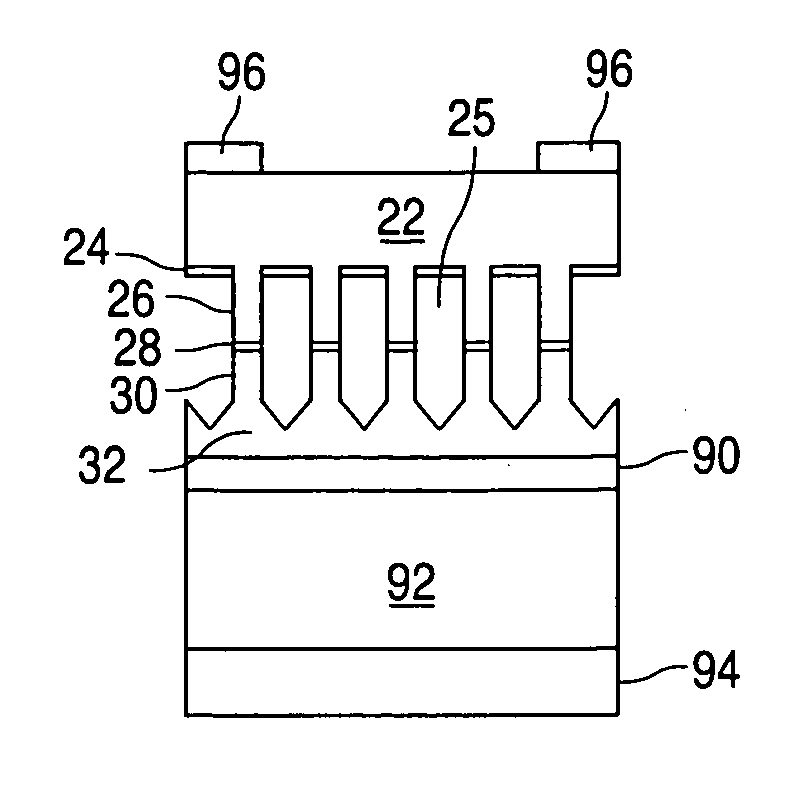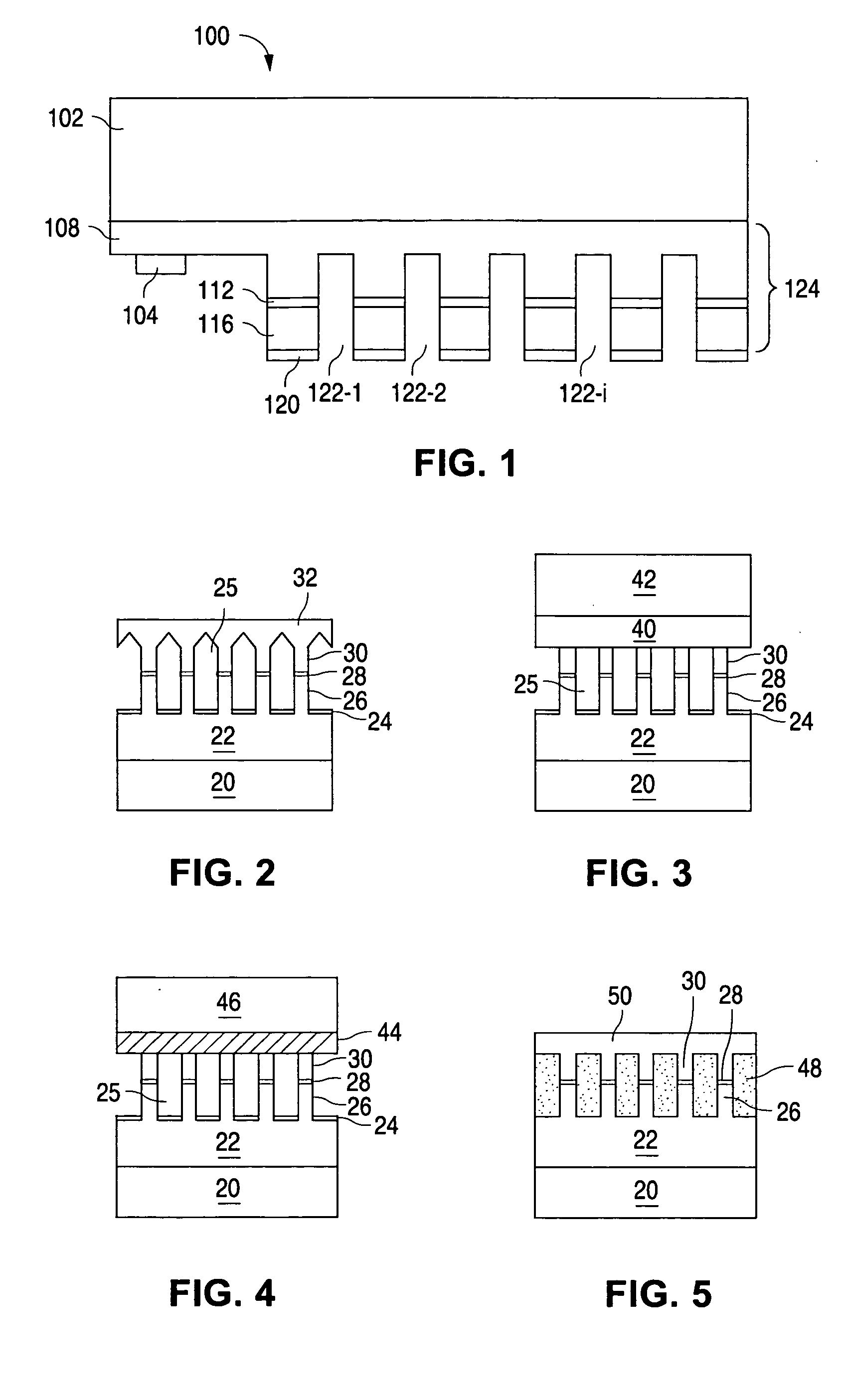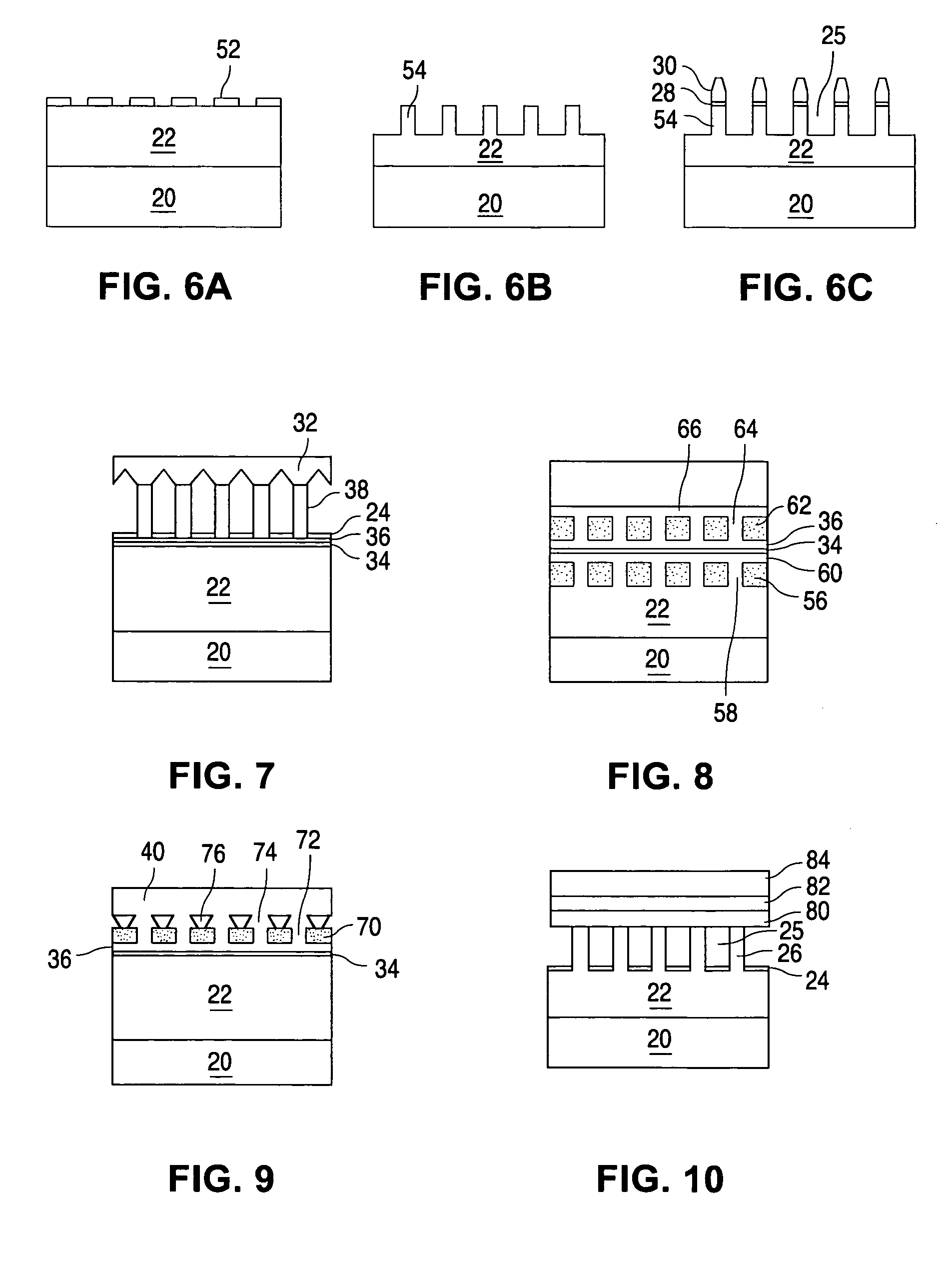Grown photonic crystals in semiconductor light emitting devices
a technology of semiconductor light emitting device and photonic crystal, which is applied in the direction of crystal growth process, semiconductor laser, instruments, etc., can solve the problems of poor extraction efficiency, less than 30%, and limited extraction efficiency, so as to reduce efficiency and avoid damage
- Summary
- Abstract
- Description
- Claims
- Application Information
AI Technical Summary
Benefits of technology
Problems solved by technology
Method used
Image
Examples
Embodiment Construction
[0024]FIG. 1 illustrates a III-nitride photonic crystal LED (PXLED) 100, described in more detail in Publication No. 2003 / 0141507, “LED Efficiency Using Photonic Crystal Structure,” filed Jan. 28, 2002 and incorporated herein by reference.
[0025] In PXLED 100 of FIG. 1, an n-type region 108 is formed over growth substrate 102 which may be, for example, sapphire, SiC, or GaN; an active region 112 is formed over n-type region 108; and a p-type region 116 is formed over active region 112. Each of regions 108, 112, and 116 may be a single layer or multiple layers of the same or different composition, thickness, or dopant concentration. A portion of p-type region 116 and active region 112 are etched away to expose a portion of n-type region 108, then a p-contact 120 is formed on p-type region 116 and an n-contact 104 is formed on the exposed portion of n-type region 108. The device may be flipped over, as illustrated in FIG. 1, and connected to a mount (not shown) through contacts 104 an...
PUM
 Login to View More
Login to View More Abstract
Description
Claims
Application Information
 Login to View More
Login to View More - R&D
- Intellectual Property
- Life Sciences
- Materials
- Tech Scout
- Unparalleled Data Quality
- Higher Quality Content
- 60% Fewer Hallucinations
Browse by: Latest US Patents, China's latest patents, Technical Efficacy Thesaurus, Application Domain, Technology Topic, Popular Technical Reports.
© 2025 PatSnap. All rights reserved.Legal|Privacy policy|Modern Slavery Act Transparency Statement|Sitemap|About US| Contact US: help@patsnap.com



